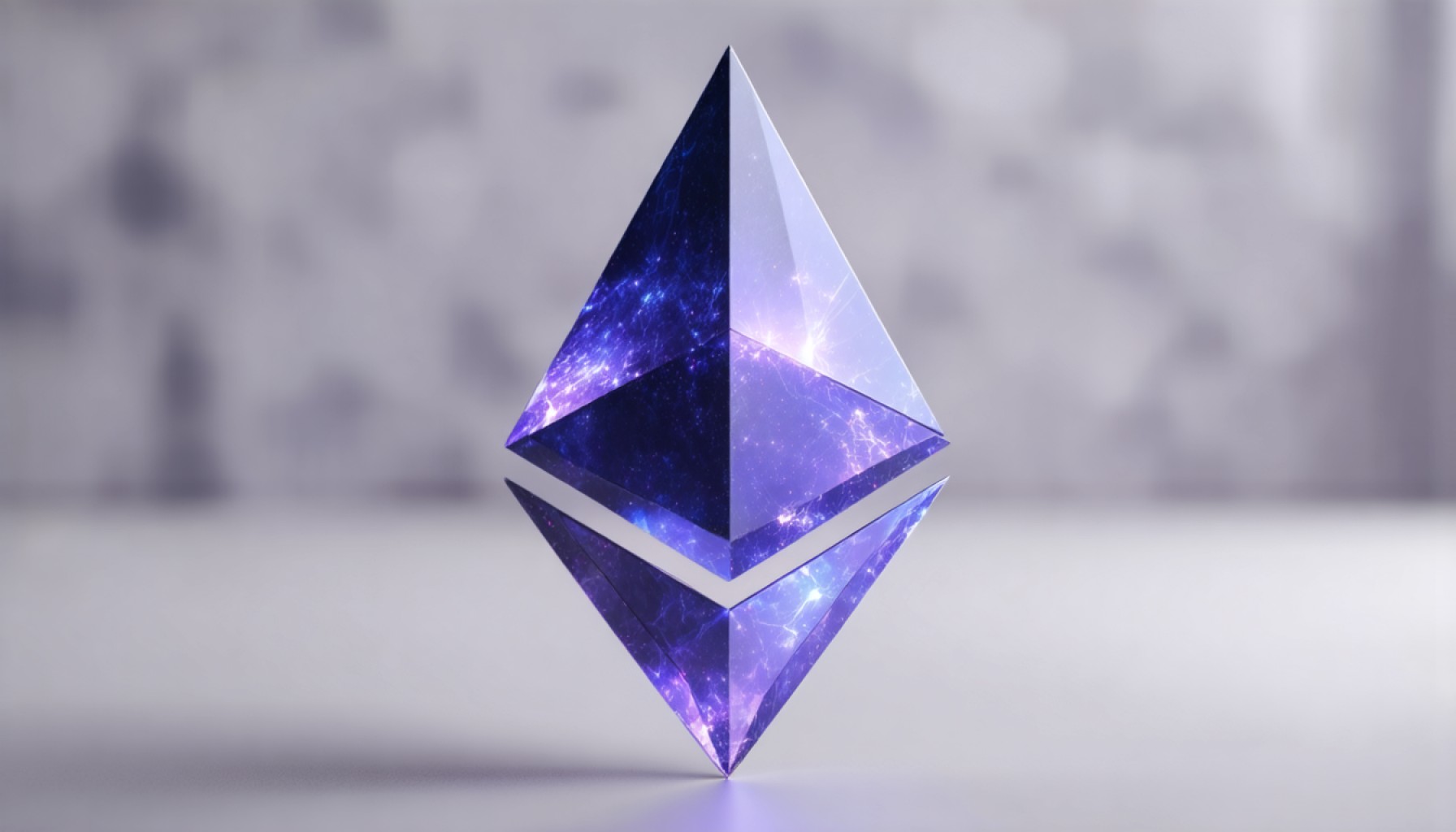- The Pectra upgrade for Ethereum is set to launch on May 7, 2025, featuring 11 extensive Ethereum Improvement Proposals (EIPs).
- EIP-7251 is central to the update, drastically raising the staking threshold to 2,048 ETH, attracting institutional investors.
- Key proposals such as EIP-6110 and EIP-7702 aim to enhance staking and introduce smart wallets to simplify transactions.
- Layer 2 projects will benefit from increased data processing capacity, potentially improving blockchain interoperability.
- Despite the improvements, Ethereum faces challenges like stagnant on-chain activity and recent price drops.
- The market exhibits cautious optimism, with Pectra promising lower fees and improved user experience amid fierce competition.
- The success of the Pectra upgrade in revitalizing Ethereum’s ecosystem is eagerly anticipated as its release date approaches.
Ethereum stands at a pivotal moment in its evolution with the impending Pectra upgrade, slated for May 7, 2025. This update is not just another tweak but a seismic shift boasting 11 Ethereum Improvement Proposals (EIPs) poised to reshape the landscape. Dubbed the most crucial upgrade since Dencun, Pectra holds the potential to reignite Ethereum’s allure across the crypto sphere.
The beating heart of this upgrade is the EIP-7251, which dramatically increases Ethereum’s staking threshold by a factor of 64, allowing validators to commit up to 2,048 ETH each, a significant leap from the current 32. This change beckons to institutional investors, promising streamlined node management and easier participation in Ethereum’s consensus. In essence, it’s a beacon for major players looking to stake their claim in the blockchain landscape.
But the allure of Pectra doesn’t end there. Other proposals like EIP-6110 aim to turbocharge crypto staking, while new layers of security promise risk-free withdrawals. Meanwhile, EIP-7702 heralds the dawn of smart wallets that could eliminate the bane of unexpected transaction fees. These smart wallets will simplify the user experience by embedding contracts that sponsor gas fees and bundle multiple actions into single, more efficient operations.
Layer 2 projects stand to gain immensely as well, with the Pectra upgrade doubling the capacity of blobs per block from 3 to 6, enhancing data processing and slashing costs. This, paired with EIP-2537, might forge new pathways toward interoperability between diverse blockchains, an enticing prospect for developers and users alike.
Yet, amidst the technological marvels, Ethereum faces a challenge. Despite these promising developments, on-chain activity remains lukewarm, with only $20 million in fees generated this month—a clear indicator of stagnation.
The market, however, remains a curious blend of hope and skepticism. Although the Pectra test run on the Hoodi network concluded successfully, Ethereum’s price stumbled post-announcement, dropping to $1,774. This dip reflects an underlying skepticism among investors, wary of fleeting promises and wary of the fierce competition from rival blockchains.
Despite doubts, experts are cautiously optimistic. The Pectra upgrade could usher in lower fees for decentralized applications, draw in institutional investors through simplified staking processes, and boost user adoption with intuitive wallet systems. But will these advancements sufficiently outmaneuver the growing competition?
As May 7 approaches, the crypto community watches with bated breath. Will Pectra herald a new dawn for Ethereum, or will it be swept away by the currents of innovation elsewhere? Only time will tell if this trailblazing upgrade can revive its majestic ecosystem.
Ethereum’s Pectra Upgrade: Revolutionizing Blockchain Dynamics
Introduction
Ethereum’s upcoming Pectra upgrade, scheduled for May 7, 2025, marks a pivotal moment in the blockchain landscape. This comprehensive update, featuring 11 Ethereum Improvement Proposals (EIPs), promises to reshape Ethereum’s technical and economic framework. Let’s delve deeper into the potential impacts, explore real-world applications, and answer common questions surrounding this monumental transition.
Key Features of the Pectra Upgrade
1. EIP-7251: Enhanced Staking Capacity
– Increase in Staking Threshold: Boosts the staking limit from 32 to 2,048 ETH per validator.
– Institutional Appeal: Streamlines node management and simplifies large-scale staking, attracting institutional investors.
2. EIP-6110: Staking Efficiency
– Turbocharged Staking: Reduces complexity and improves yield reliability, making Ethereum more attractive for both individual and institutional stakeholders.
3. EIP-7702: Introduction of Smart Wallets
– User Experience Enhancement: Eliminates surprise transaction fees by using smart contracts that sponsor gas fees.
– Bundled Transactions: Allows multiple actions in a single transaction to improve efficiency.
4. Increased Layer 2 Capacity
– Doubling Blob Capacity: Doubles blobs per block from 3 to 6, significantly enhancing data processing and cost-effectiveness for Layer 2 projects.
5. EIP-2537: Interoperability Improvements
– Cross-Chain Communication: Facilitates more seamless interoperability with other blockchains, opening doors for broader developer collaboration.
Addressing Reader Concerns
– Will Pectra Reduce Transaction Fees?
Yes, the implementation of smart wallets (EIP-7702) is set to decrease the burden of gas fees by embedding fee-sponsoring contracts, making Ethereum transactions more cost-effective.
– Why Is On-Chain Activity Currently Low?
The current stagnation, with only $20 million in fees generated, suggests market hesitation, possibly due to anticipation of upcoming upgrades and skepticism about competing blockchain technologies.
– What Are the Market Reactions?
The market is mix of excitement and skepticism. Post-announcement, Ethereum’s price dropped to $1,774, underlining investor concerns about Ethereum’s long-term viability against emerging blockchain competitions.
Real-World Implications
– For Developers: Better scalability and interoperability open new horizons for applications, encouraging innovation across different blockchain sectors.
– For Investors: The upgrade makes Ethereum more accessible and attractive, paving the way for increased participation from large-scale investors.
– For Users: Enhanced user experience through intuitive wallet systems and reduced fees could lead to higher user adoption rates.
Market Forecasts & Industry Trends
– Rise of Institutional Adoption: With higher staking limits and reduced transaction complexities, expect a surge in institutional investment.
– Competitive Edge Over Rivals: As Ethereum improves its technical capabilities, it might strengthen its standing against rivals like Solana or Cardano.
– Growth in Decentralized Finance (DeFi): The upgrade could bolster DeFi projects by lowering operating costs and facilitating smoother transactions.
Pros and Cons Overview
– Pros:
– Increased staking capability and scalability.
– User-friendly wallets reducing transaction fees.
– Enhanced interoperability.
– Cons:
– Potential security risks with new technologies.
– Market skepticism leading to price volatility.
– Dependence on network upgrades for functionality.
Conclusion and Recommendations
With the Pectra upgrade, Ethereum is set to revolutionize its blockchain architecture, offering enhanced benefits for all stakeholders involved. While challenges and skepticism persist, the enhancements promise to position Ethereum as a leader in innovation and user-friendly experiences. To leverage the benefits of Pectra effectively, stakeholders are encouraged to stay informed on the upgrade details, explore integration opportunities early, and remain vigilant about market developments.
For those interested in exploring broader blockchain topics, visit Ethereum’s official site for more insights.
Quick Tips:
– For Investors: Monitor Ethereum’s price trends and consider diversification to mitigate risks.
– For Developers: Begin integrating Layer 2 and smart wallet solutions in anticipation of cost reductions.
– For Users: Stay updated on new wallet features to maximize efficiency and reduce costs.
Stay engaged and proactive as Ethereum navigates through this transformative phase.







